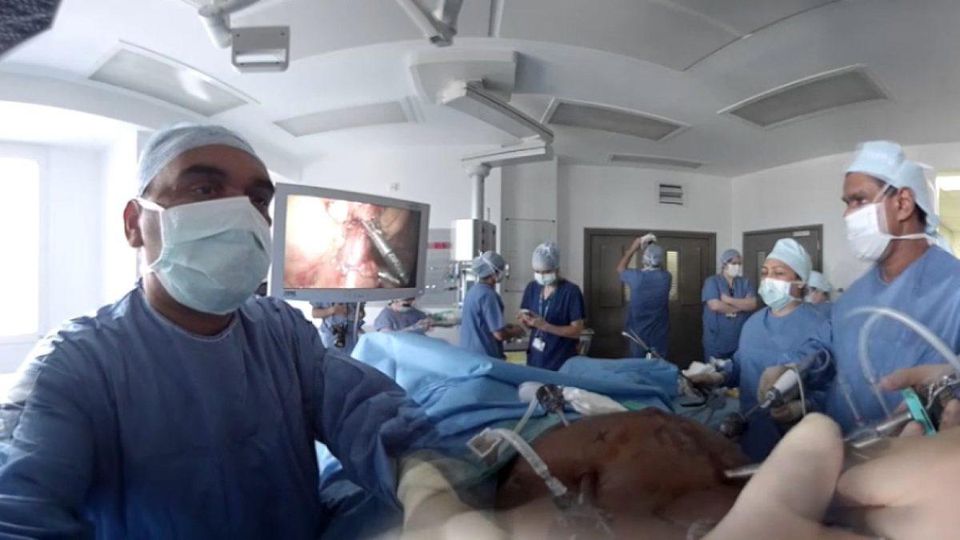
The healthcare industry should be using Artificial Intelligence (AI) to a far greater degree than at present, but progress has been painfully slow. The same factors that make the healthcare system so attractive to AI developers – fragmented or non-existent data repositories, outdated computer systems and doctor shortages – are the same things that have stopped AI from providing the gains that should be created.
The healthcare sector also presents unique obstacles for AI: data must flow freely through AI systems to achieve real results, but extracting data from handwritten patient files or PDFs is cumbersome for us, and difficult for AI. Despite technical and operational challenges, new research suggests that the arrival of the tech giants into the industry may provide the data and the capital required to digitize this fairly untapped market.
Where AI can help now
Severe fragmentation between different branches of healthcare, and life-threatening miscommunication within institutions (in 2016, ~10% of all US deaths were caused by medical errors), presents an opportunity for AI to ease the burden on doctors in more creative, less intrusive ways. Mabu is a humanoid robot developed by Catalia Health and the American Heart Association that helps patients keep on top of at home treatment for congestive heart failure. Acting as a personal health assistant, Mabu asks patients how they are feeling, makes activity suggestions and provides medication reminders. ‘There are key points we make sure Mabu covers,’ says Catalia Health founder Cory Kidd, ‘but the conversation is adaptive to what is going on with that patient at that moment,’ much like a home nurse’s visits might be scripted to a certain degree while relying on some human intuition.
Mabu is a promising step towards integrating AI into the healthcare system without disturbing doctors within facilities – the data Mabu gathers can be fed into Electronic Medical Records (EMRs) via email or text, and ‘daily conversations’ with the device mean that Catalia Health can collect patient information consensually ‘without depending on access to their medical data.’ The implementation of AI throughout healthcare institutions or an entire country will remain a huge task even for data-rich multi-nationals, but solutions like this may help to improve outpatient care and reduce readmission rates for long-term conditions without setting foot in a hospital.
The grand scheme
The move towards integrating AI with hospitals and healthcare centers is gaining pace. The UK government has announced its intentions to put the UK ‘at the forefront of the use of AI and data in early diagnosis, innovation, prevention and treatment’ by 2030. While this may be ambitious given the current status of technological advancement in the NHS, hospitals are working with a wide range of companies to tackle immediate problems on the ground. Chatbots, DeepMind, and voice biometrics are all being used to alleviate unique problems in the sector, and some companies are taking a different approach to ensure that AI is used to its full extent.
Dr. Shafi Ahmed is a cancer specialist in practice for more than 20 years, and as such is in high demand from people who need his expertise. In a conversation with Steve Dann, who at the time was working in visual effects, Dr. Ahmed related that of the 300 students under his care he was only able to directly train two at a time because the operating theatre could not fit any more people. Dann suggested he filmed an operation using 360° cameras, which enabled Dr. Ahmed to show students exactly what to do without having 300 people breathing down his neck.
This led Steve Dann to found Medical Realities, and use his skills in CGI and virtual reality to train medical students without making more work for doctors. Following the success of the 360° operation, Dann created a virtual Dr. Ahmed to answer questions for him, which is now used in conjunction with teleconferencing to help Dr. Ahmed’s cancer patients feel more comfortable in follow-up appointments. Using this combination of AI, virtual reality and CGI, Dann is working with Leeds and Queen Mary University hospitals to create virtual surgeons that can train new doctors or assist in surgeries where one or more doctors cannot be physically present.
Bit by bit transformation
Bringing about an artificially intelligent healthcare landscape will be a significant challenge, due to the sheer amount of mission-critical work on doctors’ shoulders, outdated systems and handwritten records, and fragmentation between care facilities. But Rome wasn’t built in a day, and there is already significant progress being made that does not disrupt the daily work of doctors and nurses on the ground, while still offering improved care to patients.
The AI healthcare sector is ripe for development and investment, but while the data giants figure out how to transform the system as a whole, smaller-scale projects are making real changes. Piece by piece, patient by patient, AI is on its way to fixing healthcare once and for all.























